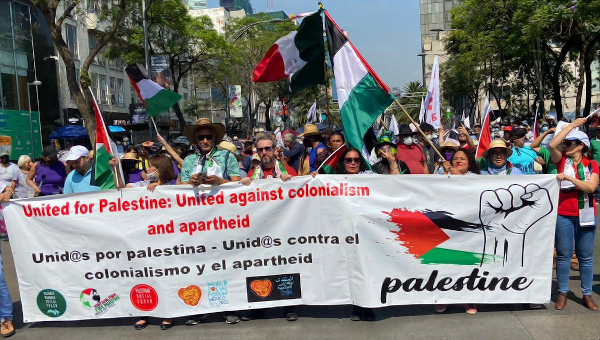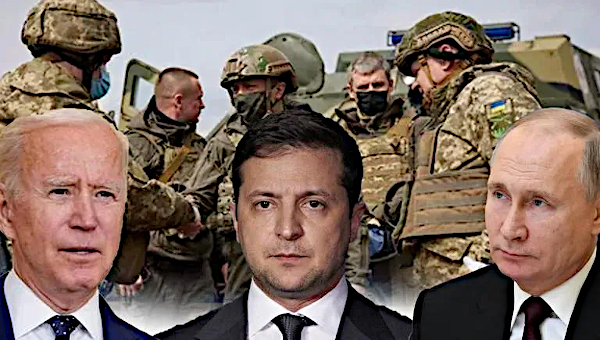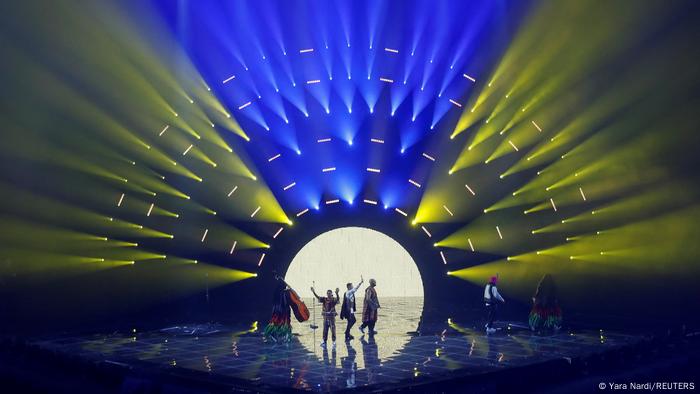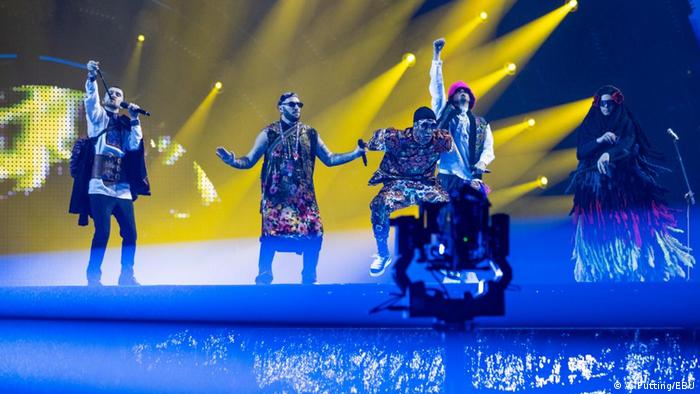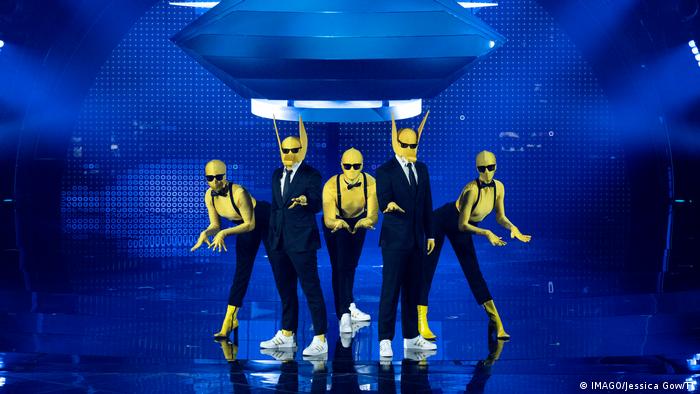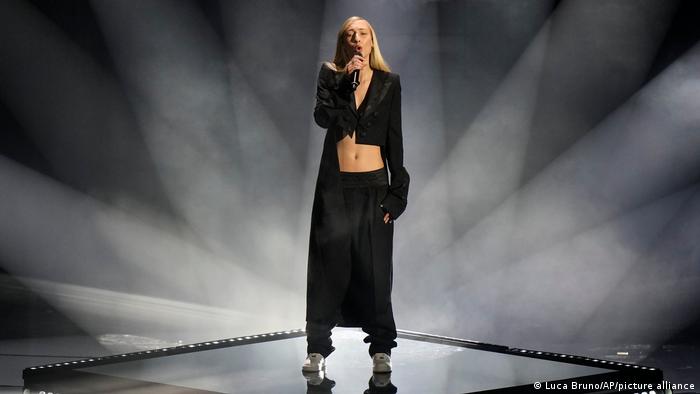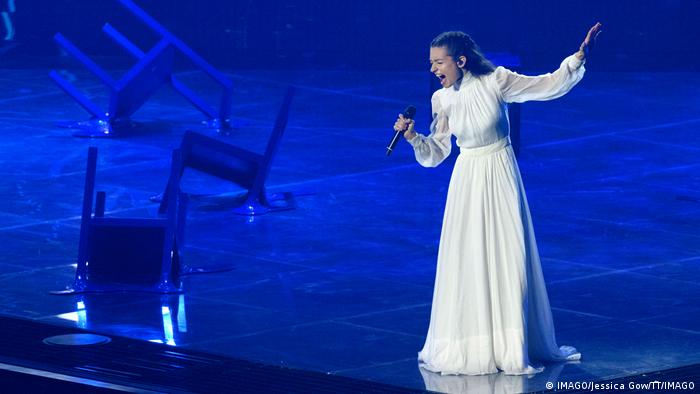A devastating war erupted in Gaza between Israel and Hamas in May 2021. A year later, a tense quiet prevails. But people in Gaza and Israel's south are wary of the possibility of new hostilities.

The streets of Gaza City, one year since the May 2021 conflict between Hamas and Israel erupted
Melon and sunflower crops stretch toward the security fence that encloses the Gaza Strip. At a distance, the outskirts of Gaza City are visible. A year ago, during the war, the Nahal Oz kibbutz and its fields in the south of Israel were a closed military zone.
"We are here just 500 meters [about 550 yards] from the border with Gaza," says Daniel Rahamim, a kibbutz resident. "Last year, we were just staying in our [fortified] safe rooms most of the time."
A year later, calm mostly prevails — but the situation remains volatile. "It's quiet now, and in one minute there can be a war because something has happened in Jerusalem. But we live with it," he says.
In the early evening of May 10, 2021, Hamas and other Palestinian factions launched a barrage of rockets toward Jerusalem, Israel returned fire, and all-out war ensued for the following 11 days.
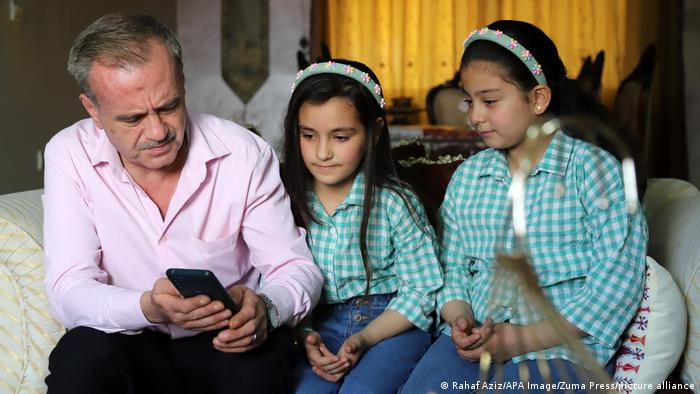
Palestinian Alaa Abu al-Ouf, 47, looks at pictures of his wife and two daughters who died following an Israeli airstrike last year on Wehda street in Gaza City
In Gaza, 261 Palestinians including civilians, children and militants died, according to the UN Office for the Coordination of Humanitarian Affairs. While Israel's Iron Dome intercepted the majority of rockets from Gaza, 16 in Israel were killed including children, foreign workers and a soldier.
The conflict was preceded by weeks of confrontations between Palestinians and Israeli police at the Al Aqsa Mosque in Jerusalem's Old City, the third-holiest site for Muslims. Other confrontations took place in the east Jerusalem neighborhood of Sheikh Jarrah, where several Palestinian families awaited a decision on whether they would be evicted from their homes to make way for Jewish settlers.
Uneasy calm prevails in Israel's south
For Nadav Peretz, a social worker at the Sha'ar Ha Negev Resilience Center near the town of Sderot, this past conflict was distinct from others. "It was very, very intense. We had hundreds of rockets in 11 days — I don't remember the exact number — that meant between 20 to 50 alerts every day," he says.
Over 4,000 rockets were fired by Hamas, Islamic Dshihad and other militant groups in Gaza towards Israel, according to the Israeli Defense Forces. Many headed towards the southern envelope and big cities like Tel Aviv. The Israeli military said it struck over 1,500 targets in the Gaza Strip, among them also an underground tunnel system.
Even now, at any moment, a so-called red alert could go off — a siren that warns residents of incoming rockets or mortar shells fired by Palestinian militants in Gaza toward Israel. People have only up to 15 seconds to seek shelter.
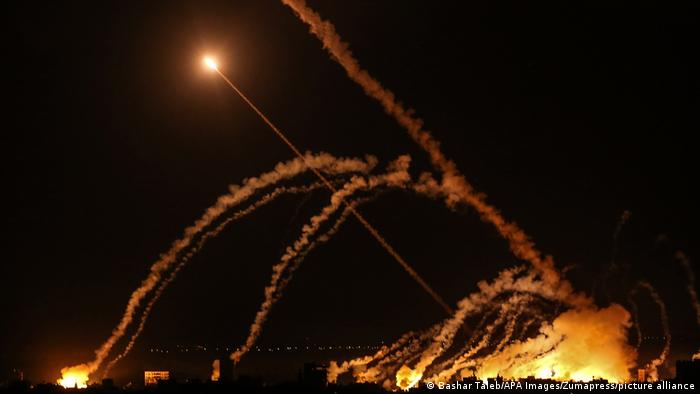
This photo shows rockets launched from Gaza City, towards Israel, early on May 16, 2021
At the Sderot resilience center in Israel's Southern District, trauma specialists work year-round to help residents and local communities deal with the stress of an ongoing threat. "We tell people, it is normal to have a reaction to an abnormal situation," says Peretz, who grew up and lives in the southern region.
So long as Hamas rules in Gaza, which belongs to the Palestinian Territories, and without a political solution, some residents here in the south say that uneasy periods of quiet alternating with periods of escalation are likely to continue. Just two weeks ago, a few rockets were launched once again at southern communities — and the Israeli air force retaliated in Gaza.
Most recently, Israel has been shaken by a series of deadly attacks allegedly perpetrated by Israeli Arab citizens or Palestinians in Israeli cities, which have left more than a dozen dead. While no Palestinian militant group claimed responsibility for the attacks, they have reignited tensions with neighboring Gaza.
Gaza still on hold after last war
On the other side of the fence, in Gaza, the memories and trauma of the intense fighting last May are felt to this day. Rola Dahmann, a young student in Gaza City, remembers this most-recent war as if it were yesterday. The apartment building where she lived with her family was destroyed. They had moved when the war erupted.
"When we left, we didn't take anything. It just happened before Eid, and all of a sudden, everything was gone," she says via Skype from Gaza City, which was closed to press and others in response to the recent attacks. Her father still pays the mortgage for the now nonexistent house and must work two jobs to cover the payments.
Watch video 42:31From enemies to friends
During the war, Israeli airstrikes and artillery fire destroyed or damaged hundreds of housing units. In Gaza City, several high-rise buildings that shaped the city's skyline were flattened and some main streets were damaged.
A year later, reconstruction efforts of the blockaded enclave are advancing slowly. Tens of thousands of tons of rubble have been cleared and recycled to repair roads, according to figures from the UN Development Agency (UNDP).
While there has been no apparent progress in mediation toward a long-term ceasefire, the "quiet for quiet" formula has been relatively stable over the past year, says Mkhaimar Abusada, a professor of political science at Al-Azhar University in Gaza.
In 2021, the Israeli government began easing some restrictions on movement and allowed about 12,000 Gazans to work in Israel. Abusada calls this "unprecedented."
"Since Israel disengaged from the Gaza Strip in the summer of 2005, Israel has closed the gates for Palestinian laborers to work in Israel."
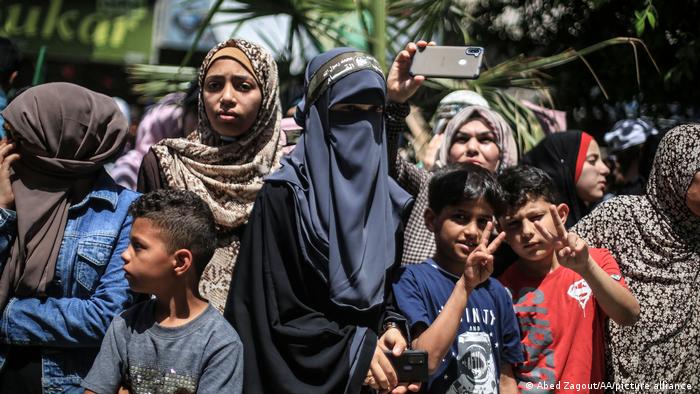
Palestinians gatherered on May 21, 2021, in Khan Yunis, Gaza, to celebrate the cease-fire between Israel and Hamas, which was brokered by Egypt
Constant worries over new hostilities
For more than 15 years, the movement of people and goods in and out of Gaza has been tightly controlled by Israel, and partly by Egypt, due to security concerns. The Palestinian Islamist group Hamas, which rules the isolated territory, is considered a terrorist organization by the US and Europe. Frequent hostilities with Israel and political division among Palestinians have taken their toll on everyday life in the Gaza Strip.
The recent tensions worry Rola Dahmann and her sister Lina. The two belong to a generation of young Gazans who have experienced four full-blown wars and several brief rounds of military escalation. The fear of new hostilities with Israel is always in the back of their minds; there are no shelters in Gaza, and nowhere else to go in times of crisis.
"We don't feel safe," says Lina.
"We still feel what happened last year," adds Rola. "And I am afraid that it might just happen again."
Hazem Balousha contributed reporting from Gaza City.
Edited by: Sonya Diehn and Stephanie Burnett
A history of the Middle East peace process
